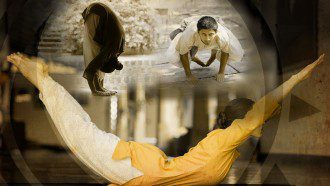29th July 2016
Guest Writer for Wake Up World
Yoga is one of the most prominent well-being practices today. Even if you are not currently practicing, or have not practiced in the past, you have probably thought about joining a Yoga class. In the US alone, it is a market that is worth $9 billion a year, with over 20 million regular Yoga practitioners; and 45% of the population show interest in trying it out. As incredibly popular as it is, we need to better understand the Yoga that is being practiced in the West.
In what way does it relate to the Yoga that originated in India, thousands of years ago?
To answer this question, we need to understand that Yoga, as conceived in India, is a comprehensive practice that includes each and every aspect of life; it’s a way of life. This type of Yoga involves moral aspects (such as not harming another living creature, and being truthful), relationship-based instructions (such as kindness and generosity), evolvement of one’s consciousness (meditation and enlightenment) and, finally, the physical practice (meant to purify body and mind).
When I share this list with my friends and students who attend Yoga classes, they often look puzzled: they have no idea what I am talking about. For them, as it is for most practitioners in the West, Yoga is a class where you go through a variety of bodily postures, with the final aim being the shaping of yourself like a pretzel.
Yoga in Western society is synonymous with the practice of asana (posture), and such asana-centred Yoga sessions are easily accessible in almost every city in the West. Yoga is being practiced as part of a physical fitness regime; and it is known that asana improves flexibility and strength. For instance, Yoga was classified as a ‘keep fit’ lifestyle practice, alongside dance exercise and aerobics, in the UK’s “2002 General Household Survey”. This category of leisure activities was rated as the third most popular, and the most regularly practiced, after walking and swimming.
Another example of the physical nature of Western Yoga practice is the accreditation of the British Wheel of Yoga (the UK governing body for Yoga) by the UK Sports Council. A final example would be the meaning of “levels” in Yoga classes. When you read that a Yoga class is Level 1 (compared with Levels 2 and 3), you should immediately realise that this class would be more basic, when it comes to asana. The postures, in a Level 1 class, would be physically easier, and practiced more slowly, compared with Levels 2 or 3. The spiritual aspects of the practice have nothing to do with this system of “levels”; a higher level does not mean, for instance, that the class would involve greater experience with meditation or deeper knowledge of the Yogic philosophy.
Yoga: a psycho-spiritual discipline.
Yoga, as originated over five thousand years ago in the Indian subcontinent, can be described as a psycho-spiritual discipline which integrates both mental and physical practices with the ultimate goal being spiritual enlightenment. This ancient Indian practice was first conceived by rishis (sages) who were in search of a blissful state; this became known as “Yoga”, embodying the concept of unity between the body, mind and spirit. The rishis were able to exercise Yoga and attain samadhi (enlightenment) by developing their meditative skills and letting go of attachment to the mind.
This ancient Indian philosophy, that is Yoga, is deeply rooted in spirituality-promoting components, including niyama (self-discipline), pratyahara (detachment from the senses) and dhyana (meditation). And yet, Western literature and practice offer very little reference to the Yogic experience acquired by commanding such modifications of the mind. Certain types of Yoga are more aligned with this original spiritual intention of the Yogic practice. The contemporary Jivamukti Yoga is one example, and the Kundalini Yoga is another; however, Western Yoga is, in large, restricted to the practice of asana.
In its original context, Yoga is presence, bliss, self-awareness, meditation – it is not the attempt to push your body into certain positions. Do not get me wrong, the physical practice, as part of Yoga, is a wonderful gift – because such practice would allow you to feel and rejoice in your body getting stronger and more flexible. Yet, if this is the entire practice, then it would be the equivalent of buying a lottery ticket just so that you could draw doodles on it.
Yoga: much more than body positions.
There is a much greater prize waiting for you, if you are willing to invest the time and energy. When practiced authentically, the postures could be a beautiful part of the Yogic journey, but they are not the most prominent aspect of it, and certainly not the aim of the Yogic practice. See if you could challenge yourself for a greater depth of practice: Bring your awareness to every breath during class, be present with every movement of the body, feel gratitude towards yourself and others during and following the practice, allow compassion to grow within you, and let go of the attachment to the things that your mind says you need and expect. Then, and only then, will you be able to enjoy the full beauty and grace of this practice called Yoga.
Also by Dr. Ivtzan:
- You Know the Benefits of Meditation – But What Are the Pitfalls?
- Enlightenment – Becoming All That You Are
About the author:
Dr. Itai Ivtzan is a positive psychologist, a senior lecturer, and the program leader of MAPP (Masters in Applied Positive Psychology) at the University of East London (UEL). His work is focusing on Positive Psychology, Mindfulness, and Spirituality. You can find his workshops, books, and scientific work on his website: www.awarenessisfreedom.com
His online Meditation Teacher Training offers an in-depth discussion and practice of meditation and mindfulness, including the topics discussed in this article. You can follow Dr Itai Ivtzan on Twitter and Facebook.

If you've ever found value in our articles, we'd greatly appreciate your support by purchasing Mindful Meditation Techniques for Kids - A Practical Guide for Adults to Empower Kids with the Gift of Inner Peace and Resilience for Life.
In the spirit of mindfulness, we encourage you to choose the paperback version. Delve into its pages away from screen glare and notifications, allowing yourself to fully immerse in the transformative practices within. The physical book enriches the learning process and serves as a tangible commitment to mindfulness, easily shared among family and friends.
Over the past few years, Wake Up World has faced significant online censorship, impacting our financial ability to stay online. Instead of soliciting donations, we're exploring win-win solutions with our readers to remain financially viable. Moving into book publishing, we hope to secure ongoing funds to continue our mission. With over 8,500 articles published in the past 13 years, we are committed to keeping our content free and accessible to everyone, without resorting to a paywall.









